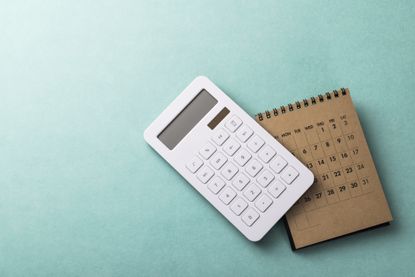
You make estimated tax payments to the IRS if you are self-employed or don’t have taxes withheld from your income for other reasons. Here's what else you need to know.
When you purchase through links on our site, we may earn an affiliate commission. Here’s how it works.

Making estimated tax payments is important since the U.S. tax system operates on a "pay-as-you-go" basis. This means the IRS expects you to pay a portion of your income as soon as you earn it.
As an employee, as many know, the government automatically withholds taxes from your paycheck based on your Form W-4. Also, retirees may have taxes taken from their Social Security payments and retirement plan distributions.
However, what if you are self-employed or don't have taxes withheld from other sources of taxable income, such as dividends, capital gains, interest, rental income, or alimony? In that case, you are responsible for making estimated tax payments to the IRS.
Be a smarter, better informed investor.
Save up to 74%
Profit and prosper with the best of expert advice on investing, taxes, retirement, personal finance and more - straight to your e-mail.
Profit and prosper with the best of expert advice - straight to your e-mail.
Estimated tax payments are the taxes you pay to the IRS throughout the year to account for income you've earned that wasn't subject to tax withholding.
The table below shows the payment deadlines for 2024. (Note that some people will have extended IRS tax deadlines for estimated tax payments due to residing or working in IRS-designated disaster areas.)
Swipe to scroll horizontally| Payment | When Income Earned in 2023 | Due Date |
| 1st Payment | Sept. 1 to Dec. 31, 2023 | Jan. 16, 2024 |
| 2nd Payment | Jan. 1 to March 31, 2024 | April 15, 2024 |
| 3rd Payment | Apr. 1 to May 31, 2024 | June 17, 2024 |
| 4th Payment | June 1 - Aug. 31, 2024 | Sept. 16, 2024 |
Sometimes, you can deviate from the set estimated tax payments schedule by following specific rules.
For example, if you pay all your estimated taxes for 2024 before Tax Day, April 15, 2024, you will not have to make additional tax payments for the rest of the year.
Additionally, if you submit your 2023 federal income tax return by Jan. 31, 2024, and pay the entire balance due at that time, you won't have to make the final estimated payment for 2023, which would normally be due on Jan. 16, 2024.
You only need to make estimated tax payments if you have taxable income.
Note: The most common taxable income for many people is earned income (e.g., from wages, tips, bonuses, etc.). However, some people are surprised that they may have to pay taxes on unemployment income, taxes on Social Security, or other taxes on other retirement income.
But for estimated taxes, suppose you have taxable income in Aug. 2024. In that case, you don't have to make an estimated tax payment until Sept. 16, 2024. You can pay the entire estimated tax by the Sept. 15 due date or pay it in two installments by Sept. 16, 2024, and January 2025.
If more than two-thirds of your income is from farming or fishing, you only need to make one estimated tax payment for the 2023 tax year, due by Jan. 16, 2024. If you meet the farming/fishing income threshold and file and pay your taxes by Mar. 1, 2024, you don't need to make any estimated payments.
To calculate your estimated tax payments, use Form 1040-ES. First, determine your expected adjusted gross income (AGI), taxable income, taxes, deductions, and credits for the year. Then follow the instructions on the Form 1040-ES worksheet to assist you in this process.
You can also refer to your previous year's tax return as a general guide. Your goal is to estimate your expected annual income.
If you overestimated your tax, you can adjust your estimated tax payments using another Form 1040-ES worksheet. You can also recalculate your tax estimate if your personal circumstances change or if any tax law changes impact your tax liability for the year.
To pay estimated taxes, use Form 1040-ES. You can pay by check, cash, money order, credit card, or debit card.
There are also online payment options like the Electronic Federal Tax Payment System (EFTPS). The instructions for Form 1040-ES explain the different payment methods.
Failing to pay enough taxes during the year can lead to IRS penalties. Even if you anticipate a refund when you eventually file your return, the IRS may penalize late or insufficient estimated tax payments.
There are some potential exceptions to tax penalties, however. For example, if you've experienced an unexpected event like a casualty, disaster, or unusual circumstance. Or if you're at least age 62, retired, or have become recently disabled, and your underpayment resulted from a "reasonable cause" and not "willful neglect."
Since these exceptions are limited, aim to pay most of your 2023 tax liability through withholding or estimated tax payments.
If you live in a state with income tax, remember that you might need to make estimated tax payments to your state as well.
The due dates for state payments may differ from the federal dates, so check with your state's tax agency.